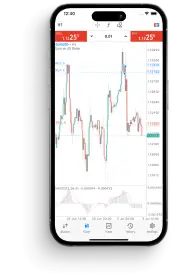OTC leveraged products, including CFDs, are complex instruments and come with a high risk of losing money rapidly due to leverage. 69% of retail investor accounts lose money when trading CFDs with CMC Markets UK plc*. You should consider whether you understand, CFDs, OTC leveraged products or any of our other products work and whether you can afford to take the high risk of losing your money.
*CMC Markets UK plc is presented as an indication of losses likely to occur by the provider when they reach sufficient trading history.

















